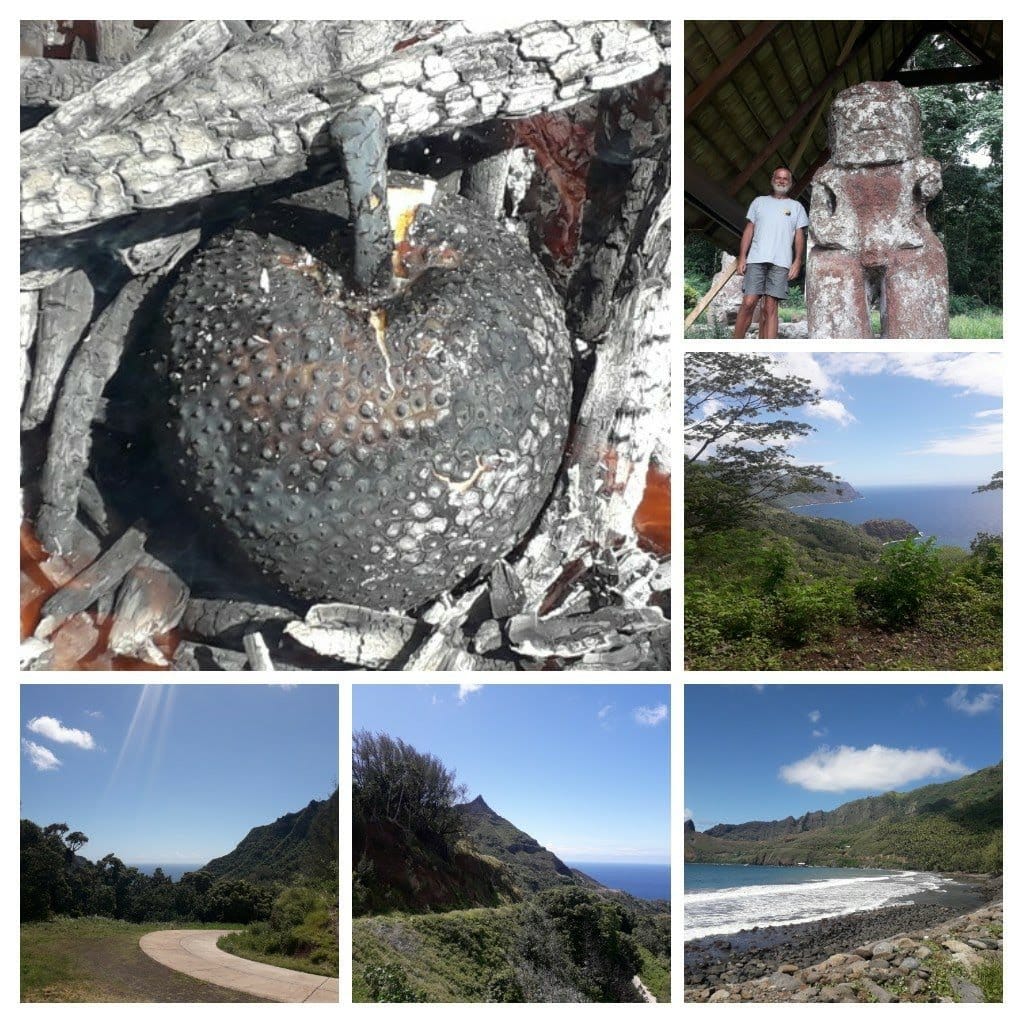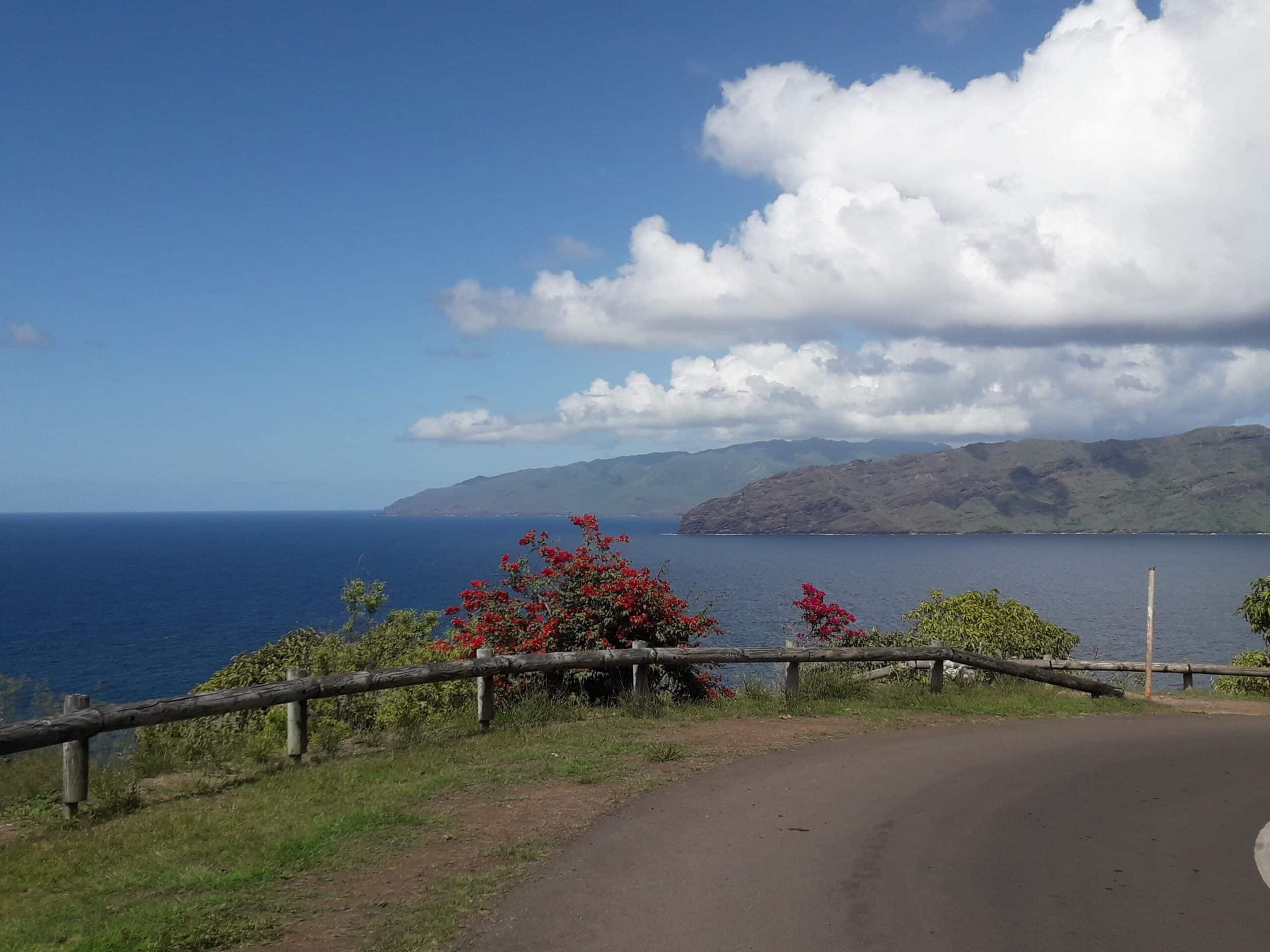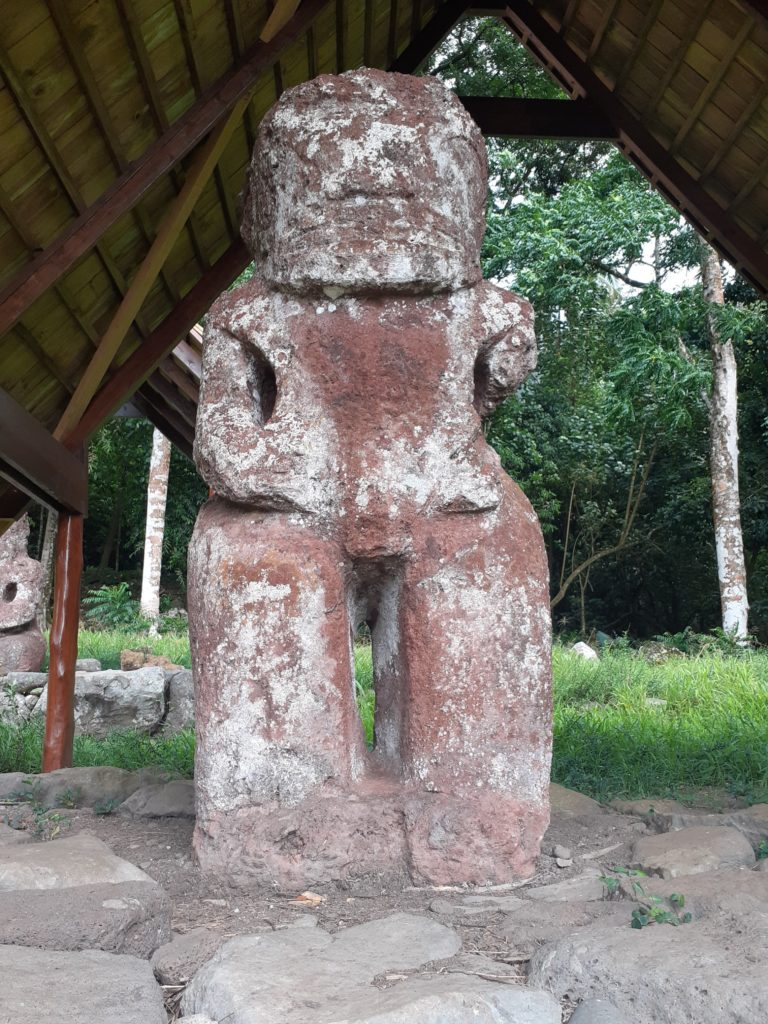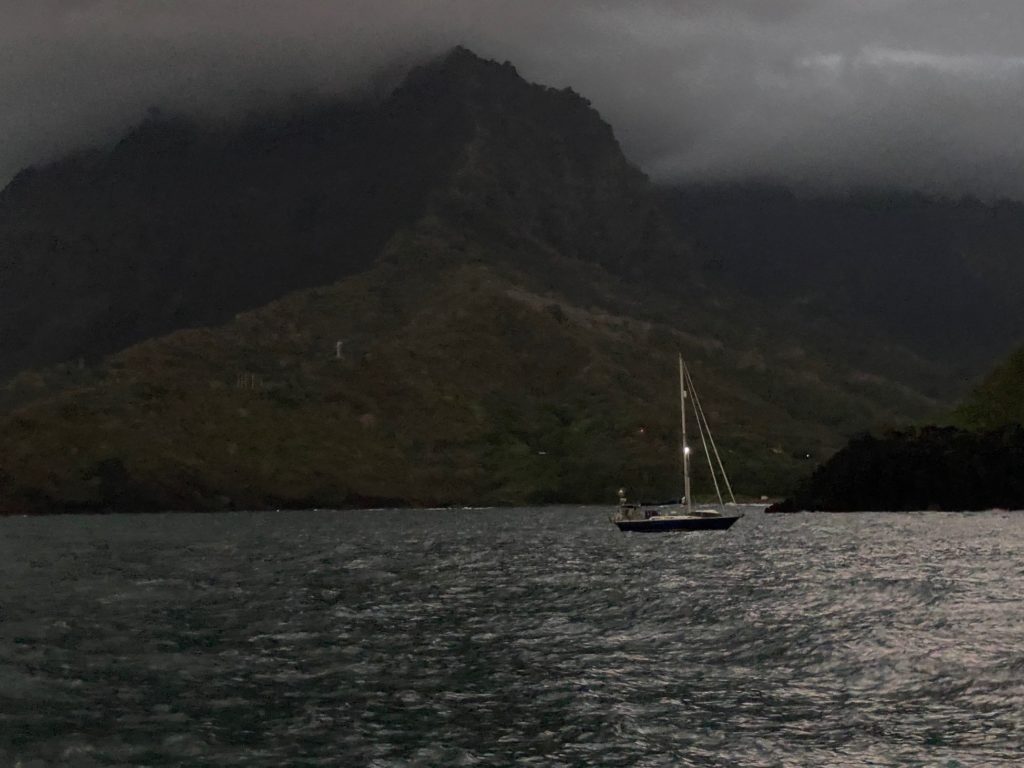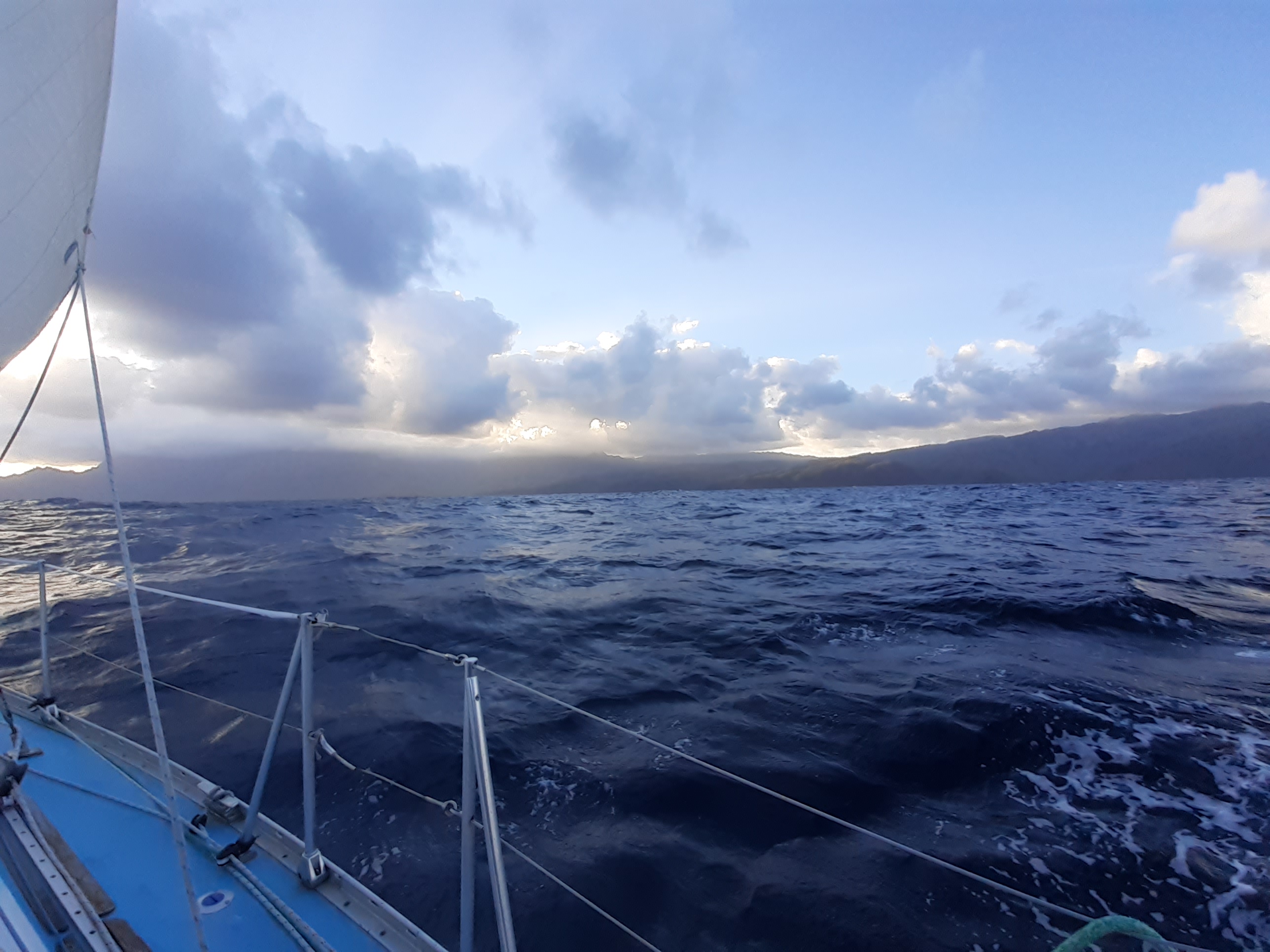Als wir hier in Hiva Oa angekommen sind war ich total von den Socken über soviel Hilfsbereitschaft 🤭. Doch bereits einen Tag später waren wir in der glücklichen Lage Patrick, einem anderen Segler, helfen zu können. Sein Dinghy war kaputt und er ankert außerhalb; er fragte über das morgendliche Netz, ob jemand vielleicht ein zweites Dinghy hat. Nachdem unser Altes in Port Linton ein großes Leck hatte und wir es nicht mehr reparieren konnten, haben wir ein Neues gekauft, doch Guido, der Fuchs, hat es geschafft unser Loch zu reparieren und somit konnten wir Patrick unser Ersatzdinghy leihen😁. Er war so dankbar und hat uns mit Wein und französischen Leckereien verwöhnt. Als er von einem Freund Obst geschenkt bekam, haben auch wir reichlich Bananen, Pampelmusen, Sternfrüchte und Litchies bekommen.🍋🍊🍌

Gestern früh beim Baguette holen traf ich Patrick und er sagte, dass er gestern Abend versucht hatte uns zu erreichen. Sein Freund hat ihn eingeladen mit ihm die andere Seite der Insel zu besichtigen und wenn wir wollen können wir gerne mit kommen👍. Die Sache hat nur einen Haken, sein Freund kommt in 25 Minuten; also schnell zurück zum Boot, alles Regen sicher machen und wieder zurück,😲😲😲🙈 denn diese einmalige Gelegenheit, mit einem Einheimischen die Gegend zu erkunden bietet sich kaum wieder.😁 Lucien ist um die 70 Jahre alt, hier auf der Insel geboren und konnte uns alles über Flora und Fauna erzählen; welche Pflanzen und Bäume von wem auf die Insel gebracht wurden und von Obst und Gemüse, von Kultur und…… (Tiki’s das sind diese Steinmändchen, haben wir auch angeschaut und auch hier wusste unser “Fremdenführer” viel zu erzählen). Genial war natürlich auch, dass wir in Patrick unseren eigenen Dolmetscher hatten😁. Auf unserem Inseltrip haben wir wieder Früchte gesammelt und zum Mittagessen gab es Brotbaumfrucht auf dem Feuer geröstet mit Corned Beef. WOW SOOO GUT!!! Auf der Heimfahrt haben wir noch gefühlt 100 Mangos aufgesammelt und wir haben dann gleich heute Chutney und Marmelade gekocht.😊 Ich brauch fürs Chutney Chilli und Lucien meinte, dass er weiß wo der wächst, doch da es schon fast dunkel war, hat er uns doch gleich zum Hafen zurück gebracht. Doch heute Abend fuhr er extra nochmal zu uns, um uns den Chilli zu bringen. Wahnsinn oder??! 😲😲 Wir waren bereits fertig und haben uns mit einem Glas Chutney nochmal bei ihm bedankt und ich hoffe, dass es ihm und auch Patrick genauso gut schmeckt wie uns 🤗🤗.
